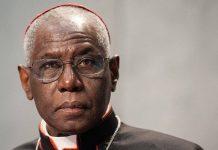July 29th, the Church remembers Blessed Urban II, the Pope who called for the first crusade.
Newsroom (01/08/2022 09:29, Gaudium Press) Named Eudes, a variant of Odon, Oton, or Oto, who then chose the name Urban II, was born in Chatillon-sur-Marne, Diocese of Soissons, now of Reims, in 1040, into a noble family.
A pupil of the one who would be the founder of the Carthusian, Saint Bruno, Eudes, in 1064, was archdeacon of Reims, and then canon. In 1073, he was in Cluny, where he was formed under the Benedictine rule.
When the great reformer Pope, Saint Gregory VII, requested from Saint Hugo the Father, the abbot of Cluny, some valuable characters to be elevated to the episcopate, Eudes was presented to him and then made bishop of Ostia in 1078.
After a period in Germany, to defend the Papacy against the excesses of the Emperor Henry IV, Eudes returned to Italy. Shortly after, the great Pope disappeared. Victor III succeeded the dead Holy Father. However, he soon left the world.
Election to the pontificate
On March 12, 1088, Eudes was elected, seating himself with great humility on the imperishable chair of the Prince of the Apostles, to govern Christendom.
Germany, then at war, was a heavy burden for the Holy See. Henry IV, with his antipope, Clement III, caused serious embarrassment in religious life, but the calm and eloquent Urban knew how to circumvent the machinations that were being hatched.
The Countess Matilda, a great friend of the Holy See, married the young Welf, Duke of Bavaria, in August 1089. This alliance of Tuscany and South Germany was the greatest obstacle facing the emperor. Nevertheless, he succeeded in invading Italy, but in 1092 he was forced to retreat. And his Pope, who was in Rome, left the city for Ravenna.
Thus, more and more, Italy gathered around Urban II, who was more and more firmly in the supreme post.
Convening the crusades
It was at the Council of Clermont, in 1095, convened by the Holy Pope, that the idea of the crusade against the infidels triumphed.
In the seventh century, with the Arab conquests, when Palestine was taken by them, the pilgrimages of European Christians to the Holy Land did not suffer a break in continuity. However, the pilgrims, who were well treated by those people, had their situation reversed with the invasion of the Seldjuk Turks, from Turkestan, north of Persia.
Mohammed had recommended holy war to spread his doctrine. He promised rewards to those who died fighting for the faith.
With a bellicose spirit, the Arabs followed, without hesitation, the prophet’s recommendations, and thus, still in the year of Mohammed’s death, they began the holy war.
In less than a century of fighting, they conquered Palestine, Syria, Mesopotamia, Armenia, India, Persia, all of North Africa, and the Iberian peninsula.
The Arab civilization was extremely brilliant. The sciences, literature, history, architecture, industry, commerce, and agriculture developed greatly.
The new conquerors, however, with a more bellicose spirit, who had become Mohammedans, fanatical Mohammedans, did not show the same tolerant attitude toward Christians as the Arabs. Having taken possession of Jerusalem in 1078, they began the persecution of the pilgrims who went there, a persecution that always combined with the most barbaric atrocities. And the cruelties that were perpetrated grew day by day.
“God wants it!”
Soon the idea of liberating the Holy Land from the infidel yoke began to take hold of Christian spirits. The medieval epic poetry is full of verses where that great desire of the world embracing the Catholic faith transpires.
It was in the Council of Clermont, in 1095, as we said, convened by Urban II, that this desire was raised to the heights of realization.
On November 27 of that same year, 1095, Urban II left the church where the Council had ended and, in a very vigorous speech, asked the knights of the West to leave for the liberation of the brothers of the East, oppressed by the cruel Turk, for the liberation of the land that God made man had trodden and sanctified.
Before long, the passionate, enthusiastic cry of “God wills it!” And the Christian people, eager to enlist in the army that would liberate the tomb of Christ, flocked in droves.
Urban II boldly took charge of the crusade. The figure of Peter the Hermit impressed all of Christendom, a Christendom that lay as if seized by the fever of zeal. And the flower of the cavalry marched with immense joy to the taking of Jerusalem.
It was a colossal event. Endless flocks of men, women and children made their way in disorder to the Holy Land and died along the way, victims of hunger, thirst, fatigue and disease. Not a few were massacred in Germany and Hungary in reprisal for the devastation they were carrying out as they passed, like a cloud of depredating locusts.
The rest, melancholically, were almost totally exterminated by the Turks after crossing the Bosphorus.
The six hundred thousand infantrymen and one hundred thousand organized knights, who set out in a never-ending eagerness to wage war on the profaners, were no happier than those of the first start. They took Nicaea, then Antioch, defended by four hundred and fifty towers.
Of that army, however, only a minority managed to catch sight of Jerusalem. They all fell to their knees. And, sobbing with emotion, they wept for joy. It was June 15, 1099.
A few days later, on the 29th of the same month, the great Urban II left his homeland and headed to “blessed Jerusalem, vision of peace,” unaware of the success that crowned his efforts.
When the pontiff died, a multitude of miracles were attributed to him. In 1881, on July 14, Leo XIII confirmed her cult, a cult rendered since ancient times.
(Life of the Saints, Father Rohrbacher, Volume XIII, p. 419 to 425)



































